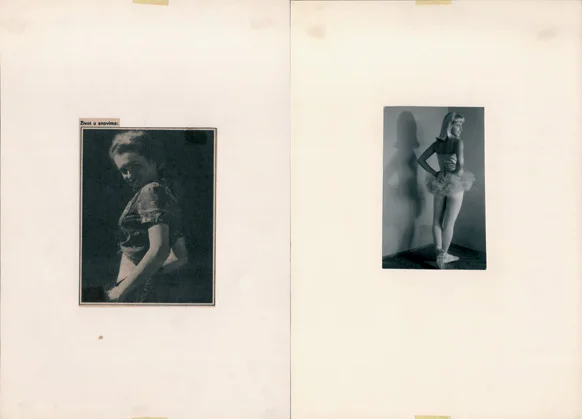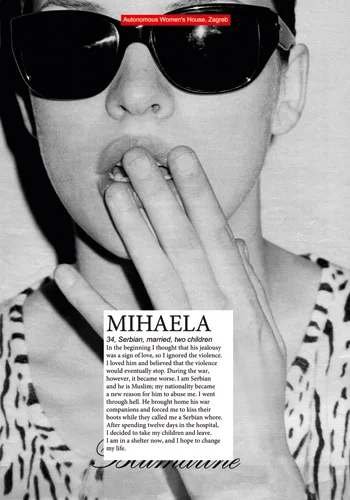Juxtaposition is an ancient technique used by artists, writers, designers and filmmakers to unsettle their audience and make meaning from the disparate. Light and dark, silence and motion, fear and excitement, the interplay between opposing elements can stimulate, thrill and confound, sometimes all at once.
From Magritte's rock floating beside a cloud to John Woo's slow-motion gunfight in Face/Off (as Somewhere Over the Rainbow plays ever so sweetly), heads have been turned and attuned to new perceptions of reality. Last Saturday at the South London Gallery (SLG), currently one of my favourite places to wile away and hour or two, I stumbled across a wonderful example in Unknown Heroine, the first UK solo exhibition by Croatian artist Sanja Ivekovic (part of which also takes place at Calvert 22).
In the 1970s there was a generation of artists in Yugoslavia that defiantly questioned the role of art in society and strove to democratise artistic space by abandoning galleries and taking to the streets. There they pondered questions about social structures, gender politics and identity. Ivekovic was part of this vanguard yet, according to the SLG, "her point of departure has been her positioning as a woman in society and the influence of mass media as well as the politics of power in the context of socialist and post-socialist society."
As Ivekovic herself proclaims,
"I am convinced that activism and art can be mutually complementary."
The Croation works in a variety of mediums – from conceptual video edits to performance and social sculpture. Each piece challenges the status quo in its own way and merits close inspection. I do love the Tragedy of Venus, a series of photomontages that pair Ivekovic with Marilyn Monroe, her mirrored poses "questioning the stereotypes that influence the production of public and private images".
General Alert (Soap Opera) also caught my eye. Once again Ivekovic, with wicked wit, peels back the absurdity of mass media by splicing together footage from a public television channel – captured amid the missile attacks on Zagreb during the Croatian War of Independence – and a popular Spanish soap of the time. Conclusive proof that real life is the most compelling drama we have.
But my favourite work is Woman's House (Sunglasses), a series of sunglasses adverts featuring models, beside whom are placed harrowing personal accounts of domestic abuse instead of gushing testimonials about how the likes of Prada and Armani have made them feel stylish and more sexy. It's a blink-and-you'll-miss-it critique that made me feel surprised, shocked and stupid for not having picked up the conceit a little sooner. The marketing world is littered with parodies of ads but this is a much darker tone. As Ivekovic explains, this is one her many strategies of intervention, a way to make people confront the toxic culture of image construction in the media. "I always seek the most effective way of getting the message across in a given context," she says. "I think that this state of urgency, which is characteristic of the times we live in, demands that artists be extremely flexible."
This fascinating exhibition explores what binds politics with aesthetics and proves that, in the words of the artist herself, "nothing is free from ideology".
"Sanja Ivekovic: Unknown Heroine" is showing at the SLG and Calvert 22 until 24 February. Calvert 22 will also be the venue for a talk given by curator Lina Dzuverovic on 7 February at 7pm.




